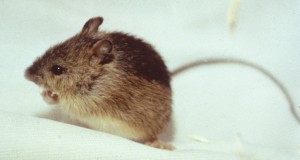For 50 years, Americans have spent untold resources worrying, arguing, regulating, and litigating, over “endangered species.” You might think by now we have a clear understanding of those two simple words. We do not.
Experts often disagree on whether something is “endangered,” as some plants and animals have always been rare. Even more perplexing, though, scientists have debated exactly what constitutes a “species” for two centuries. In 2016, Professor Frank Zachos wrote the superb textbook, “Species Concepts in Biology.” He identified at least 32 competing definitions of a “species.” That’s partly because new plants and animals are continuously created, and others go extinct. Cross-breeding is part of nature, and hybrids appear as a result. Are they separate new species?
Even Charles Darwin, the patron saint of evolution and father of modern biology, scoffed at the notion of a clear definition. Three years before publishing his “On the Origin of Species,” Darwin wrote to a friend, “It is really laughable to see what different ideas are prominent in various naturalists’ minds, when they speak of ‘species’… It all comes, I believe, from trying to define the undefinable.”
Defining the undefinable may be difficult for scientists, but not for legislators and bureaucrats. They do not have the luxury of waiting for a better scientific understanding that may take generations. No, if bald eagles, grizzly bears, or alligators are about to become extinct, they must act now – whether there is a good definition of the species or not. That’s the law, which they wrote.
 Consider this hypothetical: just as bald eagles are considered recovered, what if a few are found whose heads are yellow, not white? Should they be considered quirks of nature, or an entirely new species? In the Endangered Species Act, the U.S. government found its answer – make it a “subspecies.” That is how they “protect” the Preble’s Meadow jumping mouse in Eastern Colorado, but not identical field mice all across the Great Plains. Someone determined that one group had slightly larger jawbones than the others – and that’s all the government needed to begin regulating.
Consider this hypothetical: just as bald eagles are considered recovered, what if a few are found whose heads are yellow, not white? Should they be considered quirks of nature, or an entirely new species? In the Endangered Species Act, the U.S. government found its answer – make it a “subspecies.” That is how they “protect” the Preble’s Meadow jumping mouse in Eastern Colorado, but not identical field mice all across the Great Plains. Someone determined that one group had slightly larger jawbones than the others – and that’s all the government needed to begin regulating.
In school, we learned that a species is a group of individuals that can breed and reproduce fertile offspring. That is decidedly not the government’s definition. That would mean only one species of mouse, which would not be endangered, thus eliminating the justification to regulate.
Clearly, some species, while closely related, are easy to distinguish. Grizzlies and polar bears are not the same, though they’re both bears. Bald eagles are not golden eagles, though until they’re old enough to go “bald” it is hard to tell them apart. But should regulations really distinguish between the “Gunnison sage grouse” and all the other sage grouse across the West? The four Colorado River “endangered” fish touched off precisely that debate when they were federally listed. Considerable evidence suggests that various species of chub have hybridized (cross-breed), which mostly explains the decline of humpback chubs. Similarly, greenback cutthroat trout may be endangered simply because they crossbred with other varieties of trout.
Anthropologists once thought Neanderthals just died off, but we now know modern humans share some Neanderthal DNA. So, were they an entirely different species just because their foreheads were a bit larger? We have only found a limited number of them, so much of what we “know” is educated speculation, at best.
What if in the distant future, some anthropologist unearths a Denver Bronco linebacker and a diminutive Chinese gymnast – will they assume they found entirely distinct species? If they discover two 20-year-old men, one from 1969 in Woodstock and the other from 1944 in Normandy, what might they make of the difference in how much hairier one “subspecies” was?
Government cannot permit itself such intriguing speculation; the law must prescribe actions based on a static definition – whether one exists in science or not. Nevertheless, recently proposed changes in the Endangered Species Act have rekindled the debate on this age-old question of what, exactly, constitutes a species.
Colin Barras, a British paleo-biologist and science writer, ponders the “implications for how we think about the natural world and for our efforts to conserve it.” He writes, “Recent revelations about interbreeding between what some regard as separate species of ancient humans have left many of us wondering: who are ‘we’, who are ‘they’ and are we actually all one and the same? In other words, how we define a species has become a question at the very heart of human identity. Perhaps it is time to rethink the whole concept.”
Indeed. I vote we begin with sage grouse and field mice.
A version of this column originally appeared in the Grand Junction Daily Sentinel February 15, 2019.




Comments on this entry are closed.